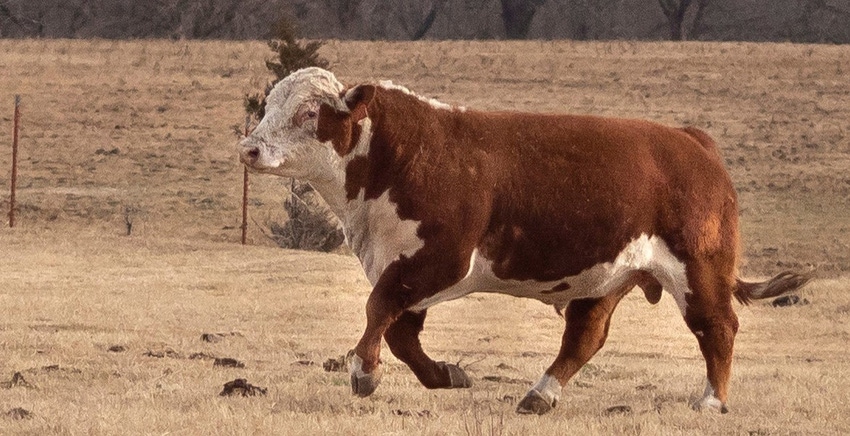Prevention is key to keeping disease out of a herd since no treatment is available.
May 26, 2020

Cattle producers need to be aware that non-pregnant cows going through the breeding season and those that abort might potentially be infected with the reproductive disease trichomoniasis, according to Oklahoma State University Extension experts.
Trichomoniasis is caused by the protozoan Tritrichomonas foetus. Infection in cows and heifers used as cow replacements can lead to abortions, which normally occur in the first four months of pregnancy. The protozoan also can cause infertility in female cattle.
Unlike some bovine diseases, bulls play a major role in trichomoniasis transmission. Older bulls are at greater risk than young bulls.
“Since infected bulls and cows look and act normal, trichomoniasis is not typically considered until cows that should be bred are found open when pregnancy checked or when cows that are with a bull year-round take over a year to calve,” said Dr. Barry Whitworth, Oklahoma State Extension veterinarian and food animal quality and health specialist.
In short, dollars lost to a cow/calf operator can be substantial by the time trichomoniasis is determined to be the cause behind a cattle enterprise’s reproductive challenges. Usually, the organism in females will clear, but it takes about four to five months. A cow’s immunity is short lived, and reinfection is possible in the next breeding season, Whitworth said. Sometimes, the protozoan in a cow can linger and infect bulls.
Since no treatments are available, prevention is the key to keeping the disease out of a herd, he said. Many states have trichomoniasis regulations that focus on bulls.
Whitworth said producers should work closely with veterinarians certified to collect samples for the testing and to ensure that they have good fencing to prevent contact with neighboring bulls.
“Be aware vaccinating cows does not prevent infection, though it can reduce the incidence of abortions and decrease the length of time cows are infected,” said Dr. Rosslyn Biggs, Oklahoma State Extension veterinarian and director of continuing education for the university’s College of Veterinary Medicine.
Biggs said a defined breeding season and consistent pregnancy testing will put a cattle producer in the best possible position to notice reproductive problems that may exist in a herd.
You May Also Like

.png?width=300&auto=webp&quality=80&disable=upscale)

